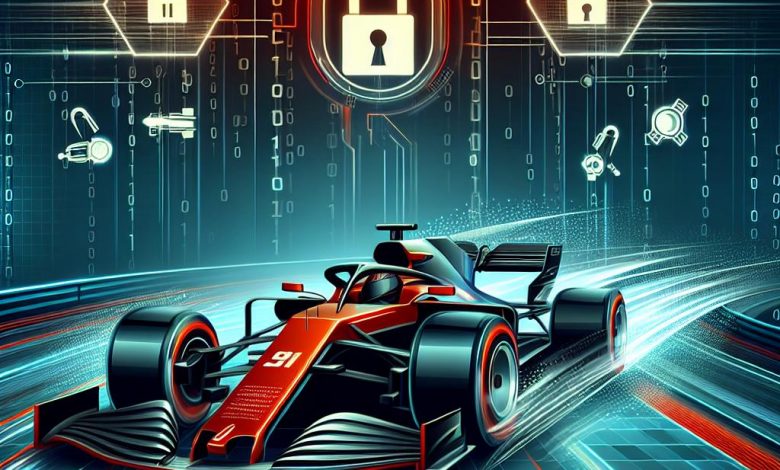
Table of Contents
Overview of the Las Vegas Formula 1 Grand Prix
The Formula 1 Las Vegas Grand Prix presents unique difficulties as a high-profile debut event in the heart of the city, with teams, fans, and officials gearing up for an unparalleled racing experience. The Grand Prix is scheduled to unfurl its grand spectacle on a freshly-paved 3.8-mile track running partially along the world-famous Las Vegas Boulevard. Amid the exhilarating atmosphere, the event prepares to manage the intricacies of a course that weaves through the tourist corridor, unlike the contained tracks of Austin and Miami.
Introduction to the Challenges of the Las Vegas Debut
As teams arrive for the anticipated F1 weekend, they confront cold weather and an array of urban obstacles, including a rogue drain cover that has already introduced elements of unpredictability. This first venture into the Las Vegas strip comes with elevated concerns, where each detail of the pop-up racing infrastructure must align within a remarkably complex urban landscape. The setting of the track, past numerous hotels and casinos, demands meticulous attention to logistics, security, and crowd management to ensure the event's success.
Mention of Potential Cybersecurity Threats to the Race
Cybersecurity is a prime ambition, with the high-speed sport being inherently data-intensive. F1 cars act as vast sensor networks at velocities over 200 miles per hour, and teams rely on secure and rapid data analysis for real-time decision-making. Threats such as denial of service attacks or intellectual property theft could be detrimental, prompting vigilant digital defenses from entities like McLaren Racing, the city of Las Vegas, and security firm Darktrace. The goal is a robust security fabric, integrated into the team's operations, safeguarding the flow of strategic race data and proprietary information amidst the anticipation of fervent F1 fans and the flash of Las Vegas' glitz.
The Data-Driven Nature of F1 Racing
Formula 1's status as a pioneer in the realm of sports analytics is not merely attributed to the presence of cutting-edge technology but is also a necessity given the intensity and precision of the sport. With their finely tuned engines and aerodynamic profiles, Formula 1 cars embrace their characterization as high-speed sensor arrays. These vehicles are not just marvels of mechanical engineering but also bastions of data collection, where every lap around the track is an opportunity to harvest valuable performance metrics.
Description of How F1 Cars Function as High-Speed Sensor Arrays
As each F1 car traverses the circuit, it captures immense streams of data from sensors that monitor everything from tire pressure and temperature to aerodynamic efficiency. This information is then wirelessly transmitted to the team's analysts, who parse through gigabytes of data to sift out insights that can offer a competitive edge on the track, whether in optimizing vehicle performance or refining driving tactics.
Emphasis on the Significance of Data and Real-Time Analytics in Racing Strategy
The immediacy with which teams can process and act upon this data directly correlates to their success in races. It is a game of milliseconds, where real-time analytics inform crucial decisions such as pit stops, fuel load adjustments, and timing for overtakes. The ability to analyze data and simulate race scenarios plays a pivotal role in the strategic framework that governs a team's race weekend.
The Potential Impact of Cyberattacks on Team Operations
In the hypercompetitive sphere of Formula 1, a cyberattack carries catastrophic implications. A breach in communication, a delay in data delivery, or the exposure of intellectual property can disrupt the critical flow of information and lead to compromised strategies or, worse, a jeopardized safety of the drivers. Consequently, teams like McLaren and their cybersecurity partners vigilantly safeguard their digital ecosystems against real-time threats, ensuring that the high-octane chess match that is a Formula 1 race transpires securely within the digital domain.
McLaren Racing’s Approach to Cybersecurity
McLaren Racing understands the gravity of cybersecurity in the high-stakes realm of Formula 1. Their approach extends beyond mere defense mechanisms, weaving cybersecurity into the very fabric of the team's operational ethos. Ed Green, the head of commercial technology, emphasizes the need for an innate security culture, reflective of the high visibility and established schedule that makes Formula 1 an attractive target for cyber threats.
Ed Green’s View on the Need for Security Integration with the Team
Green stresses that security must be an inherent component of the team, emphasizing that the public nature of the sport heightens the risk of being targeted. Consequently, McLaren's strategy focuses on proactive measures, making cyber protection an additive to its routine processes, preparing for threats both known and unforeseen, and ensuring the safety of their information assets.
Details of McLaren’s Mobile Data Infrastructure and Latency Challenges
The scale of data involved in an F1 weekend is staggering, and McLaren's mobile data center facilitates an elaborate data exchange between the track and headquarters with minimal latency. Green outlines the challenges of establishing a seamless digital connection across various geographies, highlighting the impressive feat of maintaining only a 223-millisecond delay during the Brazil race in São Paulo.
CEO Zak Brown Highlighting the Importance of Protecting Design IP and Race Data
For Zak Brown, McLaren's CEO, cybersecurity means safeguarding the lifeblood of the team—its design intellectual property and the wealth of race data that inform split-second decisions on the track. The movement and sharing of this sensitive information, particularly during a race weekend, require rigorous defenses against data breaches that could potentially compromise the team's competitive advantage.
Las Vegas’ Experience and Infrastructure for Hosting High-Profile Events
Las Vegas is not new to the limelight; the city regularly hosts events of enormous scales that attract global attention. Its existing infrastructure is primed for such occasions, and the city is well-versed in executing smooth operations, which includes maintaining stellar cybersecurity measures to protect its vibrant entertainment sector and spectators alike.
The City’s Preventative Measures in Light of Past Cyberattacks on Local Venues
Past cyberattacks on significant Las Vegas establishments have heightened the city's awareness and reinforced the resolve to bolster digital safeguards. The commitment to security becomes evident as the city takes proactive steps, implementing lessons learned to ward off threats and minimize vulnerabilities ahead of the Formula 1 events.
Continued Vigilance as a Necessary Stance in Cybersecurity Management
Las Vegas' approach to cybersecurity management is one of continuous vigilance. The city's Chief Innovation and Technology Officer, Michael Sherwood, acknowledges that there is no downtime in cybersecurity. The constant threat of cyberattacks demands ongoing preparedness and a proactive posture, ensuring that the city, its guests, and its events remain protected at all times.




